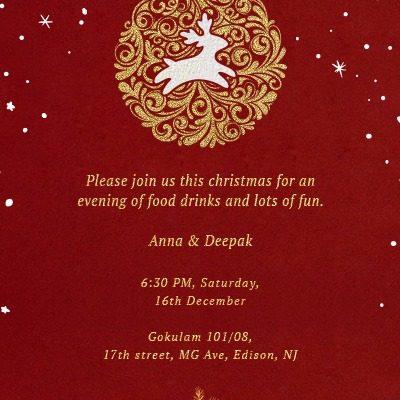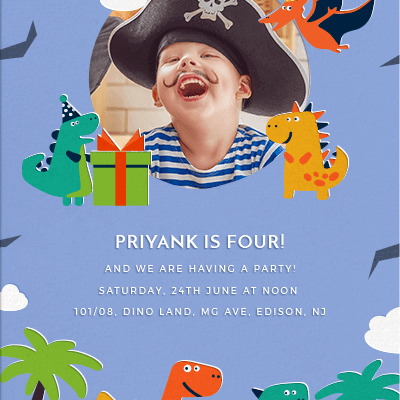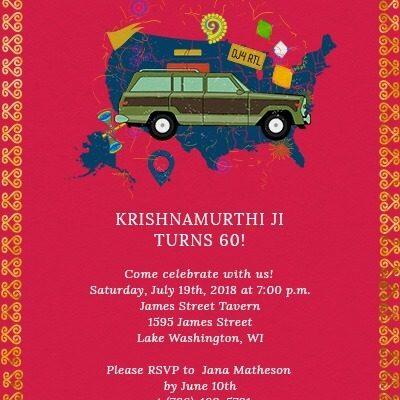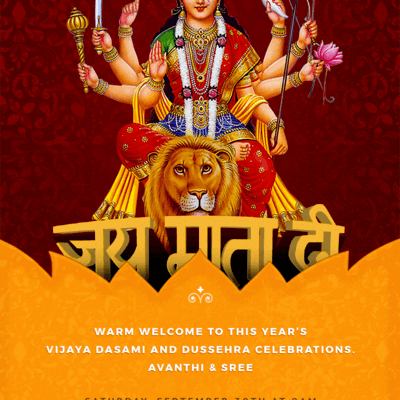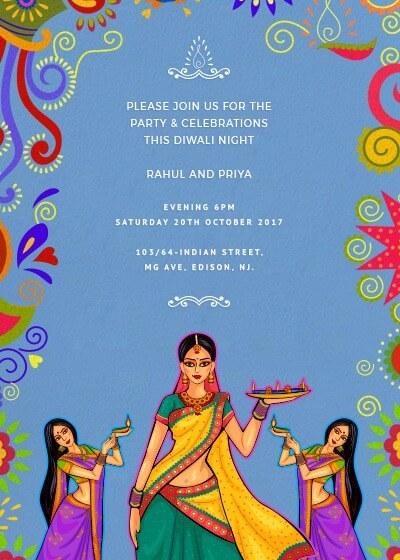
The Festival of Lights, better known as Diwali to most Indians, is one of the most eagerly awaited festivals in the country. From the fabulous new attire that men, women and children show off to each other, to the mouth-watering sweets and other dishes that are prepared especially for this festival, right down to the visually stunning fireworks displays or a simple gathering of families as they light their own firecrackers, Diwali is really a time when every Indian, in spite of any differences that may exist among them, come together to celebrate with great enthusiasm and fellowship. Houses are thrown open in invitation to welcome in the positive energy that this festival is associated with, and neighbors of all religions and ethnicities are welcomed to share in the joyful celebrations during Diwali.
Variations in Celebrating Diwali
While most of us may be familiar with the celebrations of Diwali as depicted in movies and TV shows where the Festival of Lights is said to symbolize the return of Lord Rama to Ayodhya after defeating the Demon King Ravana who had abducted his wife while they were in exile, different stories provide the backdrop for these stories in different parts of India. Speaking in broad and very general terms, in many of the more Western states of India, Diwali is believed to be the day when Lord Vishnu sends King Bali, a demon king, down to the underworld to rule over it and leave the world alone. Meanwhile, in many South Indian states, Diwali is the day when it is believed that Lord Krishna, the eighth avatar of Lord Vishnu, defeats Narakasura. As you can see, while the overall theme of good defeating evil, or light vanquishing the darkness is common to all three of these variations, it is curious that they centre around Lord Vishnu as the central character in the story, whether he appears as himself or as an avatar. For those of you who may not know, Lord Rama is considered to be an avatar of Lord Vishnu.
Five Days of Diwali
Traditionally, the festival of Diwali is celebrated over a period of five days. Again, however, there are many variations about this schedule, particularly in today’s world where the rigours of modern existence do not allow a working individual to take so many days off to celebrate, which is chief among the reasons for any differences that may exist. On the first day of Diwali, known as Dhanteras, homes and business establishments are cleaned thoroughly in order to be more pleasing for the good fortune that they will be inviting into their lives. The second day of Diwali is a follow-up to the first, and the now clean homes are decorated with intricate designs that are drawn on the floor, called Rangoli, using either colored sand or other colored powder. As is the case, traditional designs now appear side by side with more modern ones, though most households do tend to keep their rangolis very simple and in honor of Goddess Lakshmi, the Goddess of Wealth, whom they are inviting into their homes.
And so, the third day of Diwali is when most of the activities generally associated with Diwali take place, with families coming together to perform the Lakshmi Puja ritual to honor the goddess. Following this puja and prayer, they sit down to a lavish meal of specially prepared cuisine together, after which it is time to light up the night with fireworks, a symbolic act of this source of light shining brightly enough to obliterate the darkness that may have come to impose upon the lives of people over the course of the previous year.
With the light having driven away the darkness the night before, symbolically or otherwise, the fourth day of Diwali is when people visit each other, whether members of the family or simply good friends, bearing gifts and best wishes with which they share the prosperity that they have received, collectively and mutually, for the coming year. This at last, brings us to the fifth and final day of Diwali when brothers visit their sisters’ families, showering them with gifts and in turn being treated to a sumptuous buffet of treats and fine dishes prepared especially for them by their loving siblings in gratitude.
As mentioned, this could be very different from how you celebrate Diwali, which in fact, presents itself as a fantastic opportunity to have you share with us and the other readers or followers of Inytes.com. Let us know if there is something special that you or your family do that is different what is generally followed as part of Diwali celebrations. Maybe it is a type of food that you prepare, in which case we would love to have you share the recipe for it, or it could well be that you honor other deities as part of your celebrations, inviting a veritable pantheon of Gods and Goddesses into your home to partake in the feast that you have so diligently prepared for them.
And now, it is our turn to share with you the great news that Inytes.com has a selection of Diwali Inytes for you to choose from. With their vibrant, colorful designs, and their well-crafted motifs that are wholly about the Festival of Lights, the Diwali Inytes are an excellent way for you to not only announce to Inytees, your family and friends, that you are planning a grand celebration that they are all welcomed to be a part of, but by being able to track RSVPs and also share vital information like a GPS-compatible map that they can use to arrive at the exact location, you will be able to leverage the use of this handy, and might we say most stylish, party planning tool. So, if you have not already done so, visit Inytes.com and take a look for yourself. We guarantee that you will be enchanted by the Diwali Inytes available for you to use.
With each year that passes, India is plagued by the spectre of Diwali celebrations leading to record levels of pollution being inflicted upon our environment. Whether it is the lingering smoke that chokes the cities, or the heaps of garbage that accumulate because of the use of non-biodegradable materials as part of the decorations used, the problem has become something that has required urgent attention for some time now. Thankfully, there are many initiatives within India that seek to directly address this problem, including an initiative by the Government of India to promote the sale of “green” firecrackers that are more environmentally sound. On this note, the team at Inytes.com thought that we would provide some insights into things that you could do in order to celebrate Diwali in a more ecologically friendly manner, this year, and every year thereafter. Let’s just say we are trying to do every little bit that we can to make sure that we enjoy our celebrating responsibly, and with a view to keeping the world in a state of being that will ensure that we can continue to celebrate for a very long time to come.
An Eco-Friendly Diwali
Before we get down to any suggestions, we would like to state up front that we are well aware that there are many of you out there who have been celebrating a “green” Diwali for a few years, at the very least. If it is not too much trouble, we would love to hear your thoughts on the general guidelines that we will be providing, as well as to hear your own measures to make Diwali a truly environmentally friendly celebration. This knowledge that you share with us will go a long way in helping us all adopt a better, more conscious way to experience Diwali joy without any of the guilt of knowing that we were simultaneously making our environment less liveable. Thank you for sharing with us all, in advance.
“Green” Fireworks
First up, as we mentioned at the beginning of this post, is “green” firecrackers. Being the image that is most associated with celebrating Diwali, and also the number one source of pollution because of their use, firecrackers necessarily must fall in line with modern day trends and be more completely environmentally friendly. Now, there will be some of you who will say, “Well, why not skip firecrackers altogether and be done with this problem?” That is very true, we will certainly admit. Yet, apart from the nostalgia of the visually appealing sparklers and vivid bursts of color in the sky above, there is the belief that before the practice of bursting firecrackers became about showing off with the number or volume of firecrackers that a particular household or group of houses could burst, the more manageable amounts of smoke from the firecrackers used to be somehow beneficial in keeping airborne pathogens and spores at bay, Diwali being at the end of the wet and muggy Monsoon season. Of course, the chemical composition of such firecrackers was also far safer, much before turning the manufacturing of firecrackers into an industry that prized profits above public safety, as well as the safety of what has since been discovered to be deplorable conditions of the workers who assembled them, most of these being children. With this in mind, it may be prudent to question the need for firecrackers for all, and perhaps limiting the use of fireworks to a more centrally located fireworks display for all to witness. So, keep in mind whether you wish to indulge in purchasing fireworks at all, and if you decide to go ahead, make sure that you check if the ones you are purchasing are officially rated as being eco-friendly.
Environmentally Friendly Decorations
A larger number of Diwali decorations are produced using the most simple, large-scale methods and raw materials, and unfortunately for us, these are often not very environmentally friendly. Take for example the abundance of plastic flowers or other decorations made of plastic such as decorative tassels, and know that while the attempted argument for their use is their being reusable, it begs the obvious question: Why are they purchased again and again year after year in such massive quantities? The simple suggestion to address the issue of plastic being used is to switch to natural alternatives. So, that would mean using real flowers for decorations, even pieces of colored fabric that can be arranged or modified to serve as hanging facades, or other forms of decoration. With reference to the fabric, ideally older fabrics that can be repurposed as decorations would make more sense. Similarly, if using diyas as part of your decoration, see if you can get your hands on the more traditional clay version. These are easily biodegradable if they are to be thrown away after sustaining damage, but can easily be reused until they reach this stage.
Alternative Celebration Ideas
At the heart of the matter, think about the way in which you celebrate Diwali. If this Festival of Lights is all about the gifts and the stuff you will give or receive, then see if you can reimagine Diwali to be more eco-friendly. Let these gifts be natural items, or better yet, gifts of food that you can prepare at home, or maybe even get together and make together. Get kids involved in the process. Have them showcase their talents with arts and crafts that incorporate the basic concept of repurposing items that we would normally have discarded without hesitation, and get them to turn them into works of art that their young minds can come up with. The possibilities are endless, but by including your children in making Diwali “green”, you will help build the foundation for an Eco-Friendly Diwali for generations to come, and who knows, for an environmentally friendly way of life in general.
These are just broad guidelines that we offer you, but there are plenty of sources of information like this on the internet that provide ideas about how you can “green” your Diwali. And speaking of green, we ask that you try out our Diwali Inytes from Inytes.com, as an alternative to physical, paper-based cards that you may use as either invitations or simply as greetings. Not only are our Diwali Inytes completely paperless, but they will also help you track RSVPs if you are using them to let people know about a Diwali party that you are hosting, assisting you further with your planning for numbers of attendees so that you can plan accordingly and avoid potential wastage of food and/or other resources. Do give our collection a look-see and start to make Diwali more eco-friendly.

